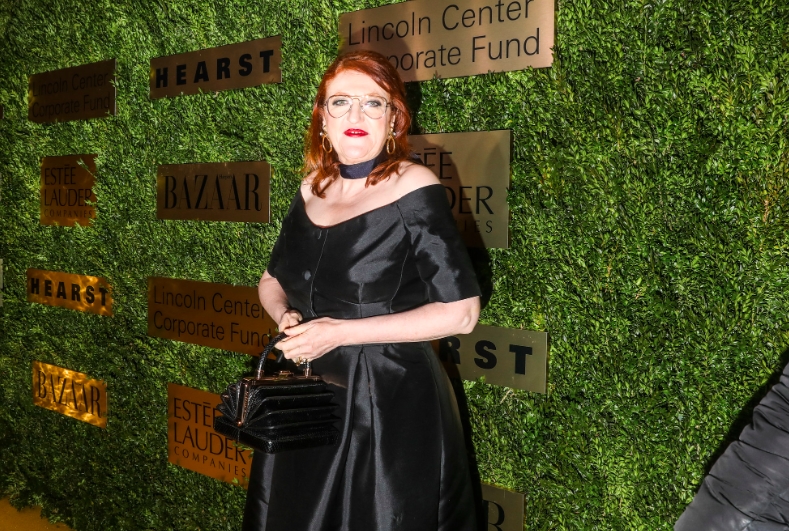Sustainably Chic is a term used to describe fashion that is created in an ethical and sustainable way. In the fashion industry, sustainability means using materials and resources responsibly, creating garments that are made to last, and designing collections that are seasonless and have a minimal impact on the environment. This approach is becoming increasingly important, especially as the fashion industry faces criticism for its negative environmental and social impacts.
Sustainably chic is gaining traction in the fashion industry, with global brands such as Patagonia, Reformation, and Everlane leading the way. These brands are setting the standard for sustainable fashion, proving that it is possible to create beautiful, high-quality garments while still reducing the environmental impact. In addition to using sustainable materials, these brands are also taking steps to reduce water consumption, minimize waste, and support local communities. By doing so, they are making a positive difference in the industry and setting a precedent for other brands to follow.

The Environmental Impact of Fast Fashion
Definition: Fast fashion is a term used to describe the cheap, trendy clothing that is produced quickly and cheaply by mass-market retailers in response to the latest fashion trends. This type of fashion has become popular in recent years because it allows people to keep up with the latest trends at a fraction of the cost.
Negative Impact on Environment: Fast fashion has become a problematic concept for the planet due to the environmental impact it has. Fast fashion is often made with lower quality materials and involves more intensive processes that use more resources and create more waste. The manufacturing process for fast fashion also produces more pollutants and greenhouse gases than traditional clothing production. Additionally, the shorter lifespan of fast fashion clothing often leads to more clothes being thrown away, resulting in more waste being sent to landfills.
Social Impact: As well as having an environmental impact, fast fashion also has a social impact on communities and workers. The production of fast fashion clothing often involves low wages and unsafe working conditions for garment workers in countries with few labor laws. It also contributes to the exploitation of natural resources in poorer countries. Additionally, the lower quality materials used in fast fashion clothing can lead to health issues for those wearing it, such as skin irritation or allergic reactions.
The Benefits of Sustainable Fashion
Define Sustainable Fashion
Sustainable fashion is a movement and process of creating fashion products that are designed, manufactured, distributed, and used in the most sustainable manner possible. This involves using materials and processes that are less harmful to the environment, working conditions that are ethical, and creating products that are designed to last longer and be reused or recycled. Sustainable fashion also considers the impact of fashion production on local and global communities and takes into account the needs of the future generations.
Highlight the Benefits of Sustainable Fashion to the Environment, Communities, and Workers Sustainable fashion has numerous benefits to the environment, communities, and workers. It reduces the amount of waste and pollution generated by traditional fashion production processes, as the materials and processes used are more eco-friendly. Additionally, sustainable fashion supports ethical working conditions, fair wages, and improved safety standards for workers, as well as providing better economic opportunities for local communities.
Show the Economic Benefits of Sustainable Fashion for Brands and Consumers
Sustainable fashion also provides economic benefits for brands and consumers. For brands, sustainable fashion reduces the costs associated with traditional fashion production, as the materials and processes used are typically more cost-effective. Additionally, sustainable fashion can help brands to build a positive reputation, as consumers are increasingly looking for brands that are committed to sustainability. For consumers, sustainable fashion offers a more affordable and ethical alternative to traditional fashion, as well as helping them to make more conscious and sustainable choices when it comes to their fashion purchases.
Sustainably Chic Fashion Trends to Watch
Highlight the emerging trends and styles in sustainably chic fashion:
Sustainability has been a hot topic in recent years, and it is no surprise that this is now also influencing fashion trends. As more people become conscious of their environmental impact, fashion designers are responding by creating more sustainable and eco-friendly styles. From natural fabrics to repurposing and upcycling, there is a growing demand for sustainably chic fashion that looks good and is also good for the environment.
List the latest sustainable materials and fabrics used in fashion design:
The latest sustainable materials and fabrics being used in fashion design are bamboo, soy, tencel, linen, hemp, and organic cotton. Bamboo is an incredibly durable fabric that is soft on the skin. Soy is a natural fabric derived from soybeans and is hypoallergenic and anti-bacterial. Tencel is a sustainable fabric made from wood pulp that is highly breathable and moisture-wicking. Linen is a natural fiber made from flax plants and is strong, absorbent, and breathable. Hemp is a natural fiber that is lightweight and breathable, making it ideal for summer fashion. Organic cotton is grown without the use of harmful pesticides and chemicals, making it a great eco-friendly option.
Provide examples of brands that are incorporating these trends into their designs: Many fashion brands are now incorporating sustainable materials and fabrics into their designs. Patagonia is a leader in sustainable fashion, using organic cotton, recycled polyester, and hemp in their collections. Stella McCartney has become well-known for her use of sustainable materials and fabrics, such as organic cotton, recycled polyester, and vegan leather. Reformation is another brand that is committed to sustainability, using recycled materials, organic cotton, and Tencel in their designs. Other brands that are embracing sustainable fashion include H&M, ASOS, and Zara.

How Consumers Can Support Sustainably Chic Fashion
Highlight Actions We Can Take to Reduce Our Environmental Footprint:
One of the most important ways consumers can help support Sustainably Chic Fashion is by reducing their own environmental footprint. This can be done by purchasing fewer new items, repairing and repurposing old items, and shopping second-hand. Additionally, consumers can reduce their carbon footprint by opting for eco-friendly transportation, such as public transportation, carpooling, or cycling when possible. Consumers can also reduce their water and energy usage by washing clothes less often, only buying items with natural fibers, and avoiding synthetic fabrics.
List Sustainable Brands for Readers to Shop From to Support Sustainably Chic Fashion: When shopping for new clothes, consumers can support sustainable fashion by shopping from ethical brands. Ethical fashion brands often prioritize sustainability and ethical practices, such as fair labor and living wages. Some of the most popular ethical fashion brands include Everlane, Reformation, Patagonia, and People Tree. Additionally, consumers can support local designers and independent brands that are committed to sustainability and ethical practices. Shopping second-hand is also a great way to support sustainability and minimize the environmental impact of fashion.
Conclusion
The future of fashion is bright and we have a responsibility to ensure that it is sustainable. Sustainably chic fashion has the potential to reduce the industry’s negative impacts on the environment, support the livelihoods of producers, and create a positive impact for generations to come. We can make this future a reality by increasing awareness of the harmful effects of overconsumption and fast fashion, shopping from sustainable brands, and investing in timeless, quality pieces that will last for years. As consumers, we have the power to create a more sustainable fashion future—one that is chic, timeless, and respectful of the environment. By celebrating fashion that is fashionable, ethical, and sustainable, we can create a better future for the fashion industry and our planet.
FAQs
1. What is the meaning of sustainably chic fashion?
Sustainably chic fashion is the practice of producing and consuming fashion in a way that promotes environmental, social and economic sustainability. This includes using eco-friendly and ethical materials, reducing waste, and fostering a more conscious and responsible relationship between fashion and the planet.
2. What are the benefits of sustainably chic fashion?
The benefits of sustainably chic fashion include protecting the environment, supporting ethical labor practices, promoting transparency in the fashion industry, and creating more sustainable production and consumption patterns.
3. How can I shop sustainably chic fashion?
To shop sustainably chic fashion, look for brands that use eco-friendly and ethical materials, practice fair labor, and adhere to sustainable production and consumption practices. Additionally, look for second-hand and vintage items, shop locally, and invest in quality pieces to reduce waste.
4. What materials are used in sustainably chic fashion?
Common materials used in sustainably chic fashion include organic cotton, hemp, bamboo, linen, Tencel, recycled polyester and other eco-friendly fabrics. These materials are more sustainable than conventional fabrics and often have a lower environmental impact.
5. What is the difference between ethical and sustainable fashion?
Ethical fashion focuses on creating fashion in a way that promotes human rights, animal welfare, and fair labor practices. Sustainable fashion, on the other hand, focuses on creating fashion in a way that reduces waste and has a lower environmental impact. The two terms are often used interchangeably, but they are not the same.
6. What is fast fashion and how does it affect sustainability?
Fast fashion is the practice of producing and selling fashion items at an extremely fast pace and at a low cost. This has had a negative effect on sustainability, as fast fashion encourages overproduction and consumption, and often uses materials and labor practices that are not sustainable.
7. How can I reduce my impact on the environment when buying fashion?
To reduce your impact on the environment when buying fashion, look for brands that use eco-friendly and ethical materials, practice fair labor, and adhere to sustainable production and consumption practices. Additionally, shop second-hand, vintage, and locally-made items, and invest in quality pieces to reduce waste.
8. What brands make sustainably chic fashion?
There are many brands that make sustainably chic fashion. Some popular brands include Everlane, Reformation, Patagonia, Amour Vert, Nisolo, and Allbirds.
9. What are the most sustainable fabrics?
The most sustainable fabrics include organic cotton, hemp, bamboo, linen, Tencel, recycled polyester, and other eco-friendly fabrics. These materials have a lower environmental impact than conventional fabrics and are often used in sustainably chic fashion.
10. What is the future of fashion?
The future of fashion is likely to be more sustainable and ethical, with increased transparency, more eco-friendly and ethical materials, and more conscious production and consumption practices.


















